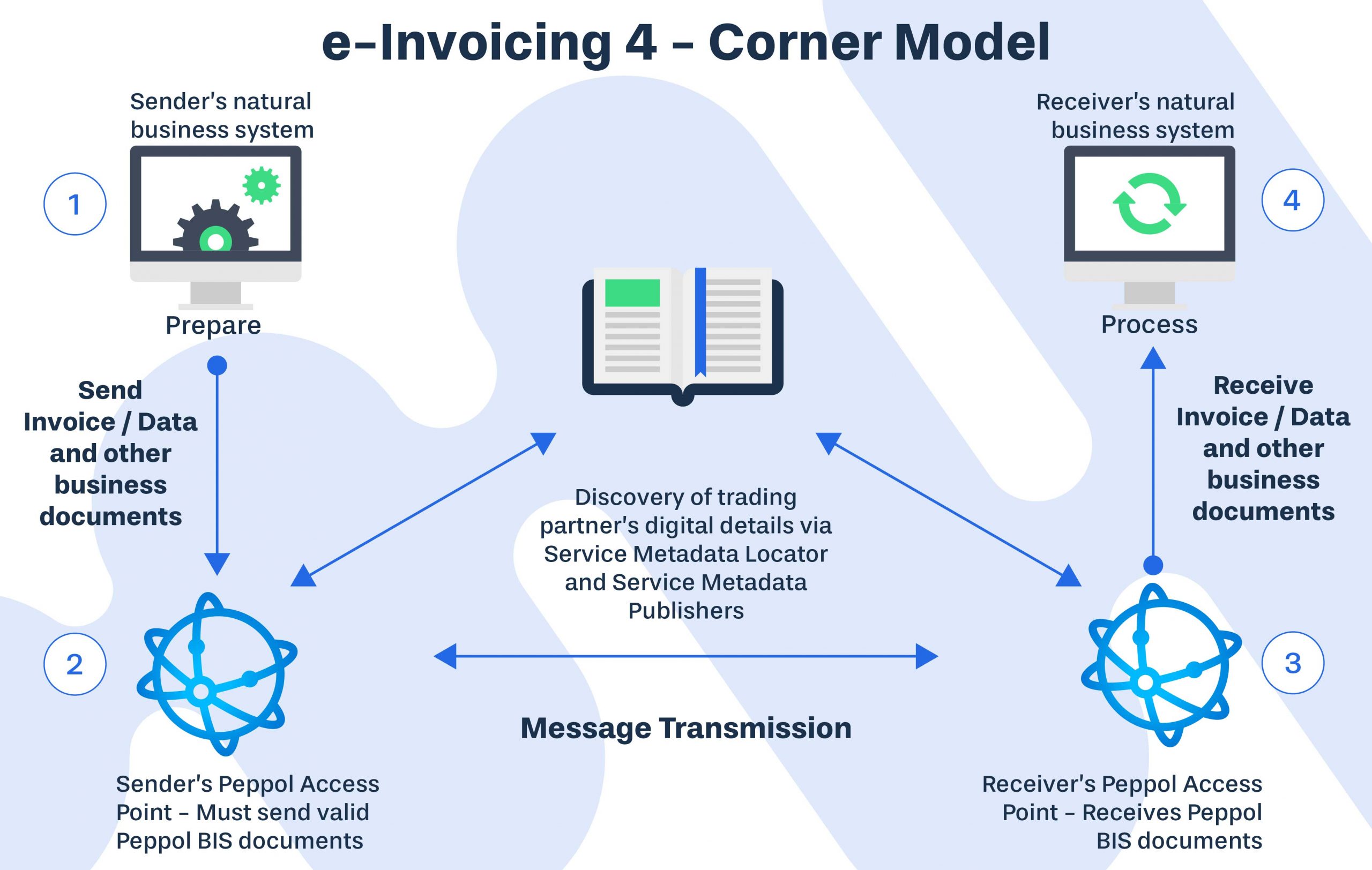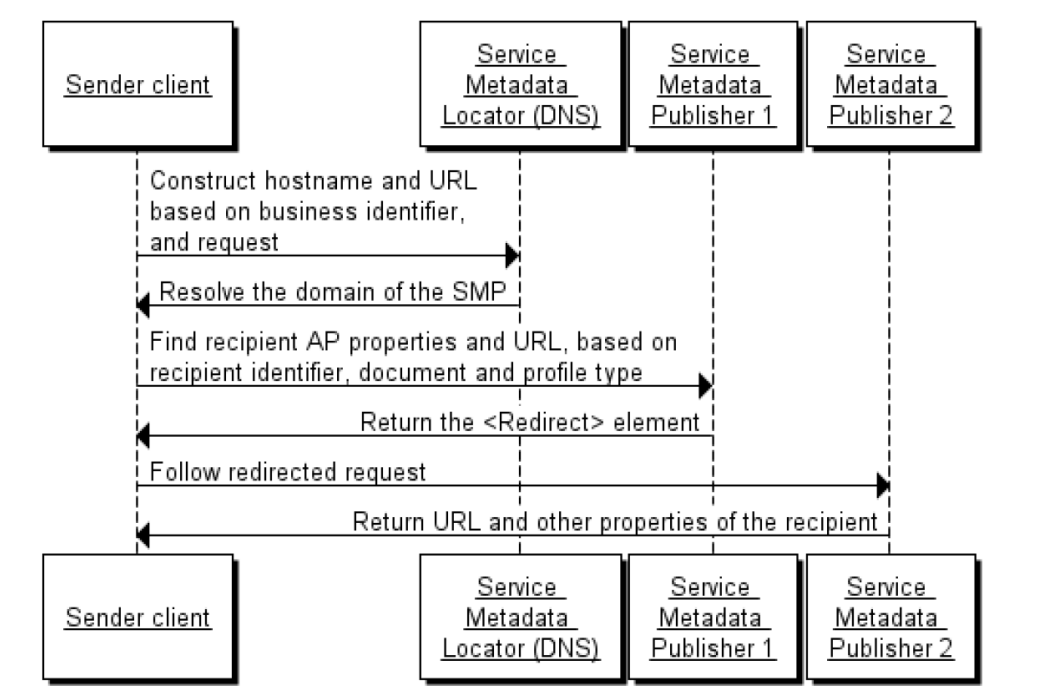# What is Peppol?
Peppol (Pan-European Public Procurement Online) (opens new window) is a set of specifications maintained by the OpenPeppol non-profit organization with the aim of standardizing cross-border, electronically supported procurement procedures* (opens new window).
It is an extremely secure, international network that allows your company to exchange business-critical electronic documents with everyone who has registered as a part of the Peppol network. And there are already hundreds of thousands of public and private companies that have done so.
Peppol was developed as an EU standard. As a result most businesses in the network are based in Europe. However, operators in countries all over the world have already adopted the standard as well – including companies in Canada, New Zealand, Singapore and the United States, to name but a few.
In other words, there is every reason to believe that this may well become the long-awaited global standard – a standard that will make it much easier to complete electronic transactions worldwide.
Read more on our Peppol product page (opens new window).
# How does Peppol work?
As mentioned previously, Peppol is an EU standard for exchanging electronic documents such as invoices. But what does that mean, actually?
It means that the EU has laid down a set of specifications that an invoice, for example, must fulfil in order to be sent via the Peppol network. All public authorities in the EU can receive or will be able to receive your electronic invoices as long as they comply with the stated specifications. However, you are not limited to sending invoices to public sector bodies because many private businesses can already receive (and send) Peppol invoices.
But how can you be sure that the invoice you send actually meets the requirements for a Peppol invoice? And how do you send it to the intended recipient?
Well, to do this, you need what is known as a Peppol Access Point.
# What is a Peppol Access Point?
As the name suggests, a Peppol Access Point is your connection to the Peppol network. It is typically a service you purchase from a service provider. In this way, your business will be able to exchange electronic documents with other companies that are also linked to an Access Point.
It is rather like working with a Telecom Service Provider (TSP). When you want to call another person, you simply dial the number and your TSP works with the call receiver’s TSP to make the connection.
There are more than 200 certified Access Points around the world. Together, they form a secure global network you can use to send and receive invoices and other electronic documents.
When you send your invoice, your Access Point handles the process of transporting it to the recipient’s Access Point. The recipient’s Access Point then forwards the invoice to the recipient.
This procedure is illustrated below. It is known as the “4 corner model” on account of the four parties involved in the exchange: your organization, the recipient’s organization and your respective Access Points.

The Procurement Service Bus is a Peppol Access Point certified solution because it passes all Peppol conformance tests.

# What is the SML?
The Service Metadata Locator (SML) is a centralized service maintained by Peppol and is a component of CEF eDelivery that is responsible for Dynamic Service Location: in order to send a message, the Access Point of a sending party needs to discover where the information about a receiving party is stored.
The Service Metadata Locator serves this purpose, and guides the Access Point of the sending party towards this location, which is called the Service Metadata Publisher (SMP).
In other words, the SML is used to retrieve/add/update/delete information about the receiving parties and SMPs location on a Domain Name System.
The Procurement Service Bus SML a direct secure connection with the Peppol webservice.
# What is the SMP?
All Peppol participating organizations (such as contracting authorities or suppliers) publish their receiving capabilities (delivery addresses, business processes and document types supported, etc.) using a service called a Service Metadata Publisher (SMP).
The purpose of the SMP is similar to an address book or business registry containing details of participants within a specific eProcurement community.
Typically, an SMP is provided to complement an Access Point, because they publish details for customers of the Access Point that wish to receive e-Documents.
The Procurement Service Bus SMP is one the the very few OASIS SMP conformant solutions (opens new window) that passed all the SMP conformance test assertions.
# Multiple Access Points via SMP redirect
For each participant identifier, the SML may only point to a single SMP. There are cases however where the owner of a participant identifier may want to use different SMPs for different document types or processes. This is supported by Service Metadata Publisher Redirection.
In this pattern, the sender is redirected by the SMP to a secondary, remote SMP where the actual SignedServiceMetadata can be found. A special element within the SignedServiceMetadata record of the SMP points to the SMP that has the actual Service Metadata and certificate information for that SMP. The diagram below shows this flow:

Note that only one degree of redirect is allowed; clients are not required to follow more than one redirect, i.e. a redirect resource cannot point to another redirect resource. Allowing one level of redirect permits the described use case to be realized, while avoiding the possibility of cyclic references and long chains of redirects. This information is from docs.peppol.eu (opens new window).